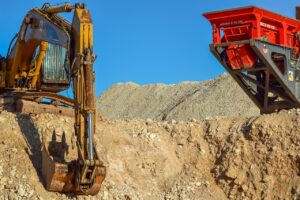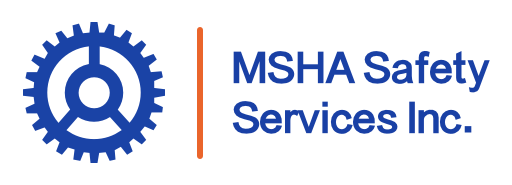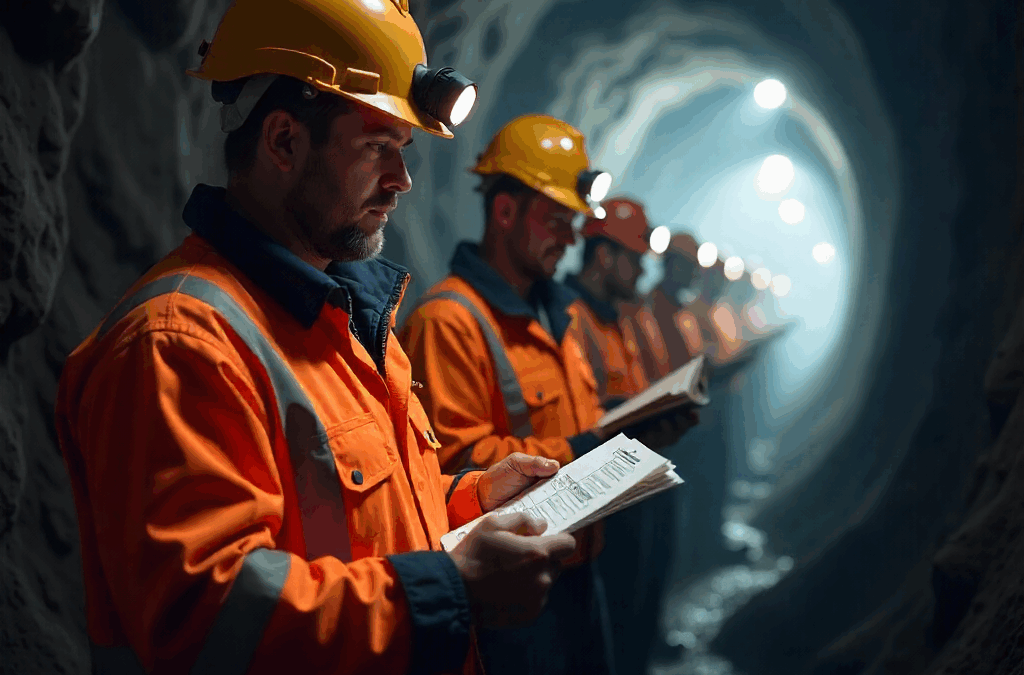Mining operations often take place close to steep highwalls and large stockpiles of loose materials. While these features are essential for ongoing production, they also introduce serious safety challenges. Unexpected failures can happen suddenly, risking lives, equipment, and the entire operation. Understanding the science behind highwall and stockpile stability, along with the necessary safety protocols and prevention methods, is vital to keeping everyone safe. This article covers what highwalls and stockpiles are, why they might fail, and how engineering controls, training, technology, and regulations all work together to prevent accidents.
What Are Highwalls and Stockpiles? Understanding the Basics
In mining, a highwall refers to the steep, exposed rock face left after material extraction in open-pit mines or quarries. Stockpiles, on the other hand, are large piles of mined or processed materials like ore or coal, stored for later use. Both serve crucial roles — highwalls mark where excavation has happened, and stockpiles ensure smooth material handling and processing.
Because both involve heavy, unstable masses with steep slopes, their stability requires constant attention. When either a highwall or stockpile fails, the collapse can be sudden and dangerous, causing damage, injuries, or even fatalities. That’s why understanding their makeup, how they’re built, and the surrounding environmental conditions is the first step toward preventing accidents.
Common Causes of Highwall and Stockpile Failures
Several factors often contribute to failures in these structures. Weak rock layers, fractures, or surfaces worn down by weather can compromise stability. When slopes are made too steep, it increases the chance they’ll give way. Adding too much weight at the top of a slope places extra pressure that can lead to failure. Water is another major culprit—rain or groundwater seeps can weaken the materials holding everything in place. Even mining activity like blasting or nearby construction vibrations can destabilize these slopes. Recognizing these causes is crucial for applying the right prevention methods.
Signs of Instability: What to Watch for on Site
Experienced workers keep a sharp eye out for early warning signs that a slope might be unstable. Cracks appearing along the crest or base of a slope, sudden bulges or shifts in material, falling rocks, or changes in how water drains off the slope all signal trouble ahead. Catching these early can prevent serious incidents by triggering timely interventions.
Engineering Controls for Highwall and Stockpile Stability
Engineering plays a major role in keeping slopes stable. This starts with designing slopes at the proper angle based on the materials and site conditions. Sometimes, creating stepped slopes or “benching” can reduce pressure and boost stability. Proper drainage systems help divert water away, preventing erosion and saturation that could undermine the slope. Reinforcements like rock bolts, mesh, or retaining walls secure vulnerable faces. Good engineering design extends the safe working life of mining sites and keeps workers safe.
Safe Operating Practices Near Highwalls and Stockpiles
When working near steep slopes, following strict safety measures is necessary. This means staying a safe distance from edges, avoiding adding extra weight on top of slopes, regularly inspecting the area, and marking hazardous zones clearly with barricades or signs. Coordination during loading and hauling operations is also essential to keep traffic away from risky spots. By consistently sticking to these practices, companies can greatly reduce the chance of accidents.
Using Technology to Monitor Slope and Wall Movement
Technology has become a powerful tool for spotting potential slope failures before they happen. Tools like laser scanning, drones, and real-time radar can precisely monitor slope changes. This data feeds into safety management programs, allowing supervisors to react quickly if a slope shows signs of danger, halting operations before disaster strikes.
Slope Failure Prevention and Highwall Safety Management
Combining these monitoring technologies with safety management plans provides a proactive approach to slope safety. Real-time alerts give crews the chance to take immediate action if thresholds are exceeded. This approach saves lives and minimizes damage to equipment and infrastructure.
Training Workers to Recognize and Respond to Stability Hazards
Proper training is key to effective slope safety. Workers need to know what instability looks like, how to report issues, emergency evacuation procedures, and safe ways to operate equipment near unstable ground. Regular drills help keep everyone prepared to respond swiftly in emergencies.
Regulatory Standards for Highwall and Stockpile Safety
Mining operations must comply with strict safety regulations designed to protect workers and equipment. These rules ensure regular inspections, proper hazard reporting, and adherence to safety protocols. Following regulations isn’t just a legal obligation — it’s a vital part of keeping mines safe and operational.
Rock Burst Prevention, Control, and Safety Reporting
Though separate from slope stability, preventing rock bursts — sudden, violent failures underground — is another important aspect of mine safety. Regulations often require risk assessments and thorough reporting to help manage these hazards alongside slope safety practices.

Preventing Fatalities Through Proactive Stability Management
Most highwall and stockpile accidents can be avoided by taking a proactive stance. This includes regular inspections by experts, keeping monitoring equipment well-maintained, adjusting slope designs as conditions evolve, and fostering open communication between supervisors and workers about potential risks.
Ensuring Stability Through Safety and Prevention Practices
Maintaining stable highwalls and stockpiles is a continuous effort involving technical expertise, vigilant workers, advanced technology, and strict regulatory compliance. Together, these components help mining operations minimize risks, protect their people, and maintain efficient, long-term productivity.

